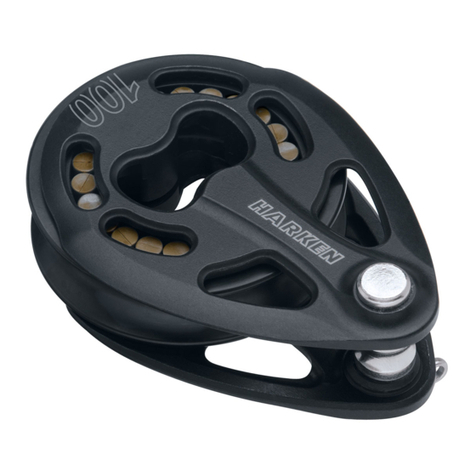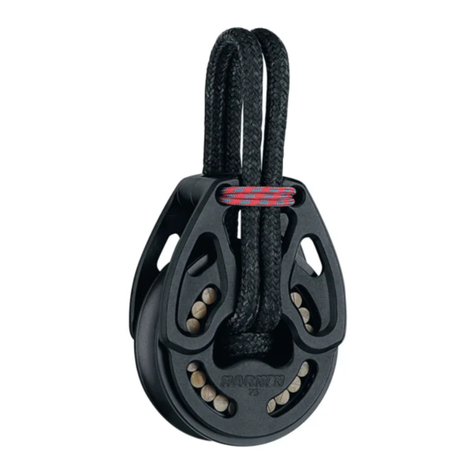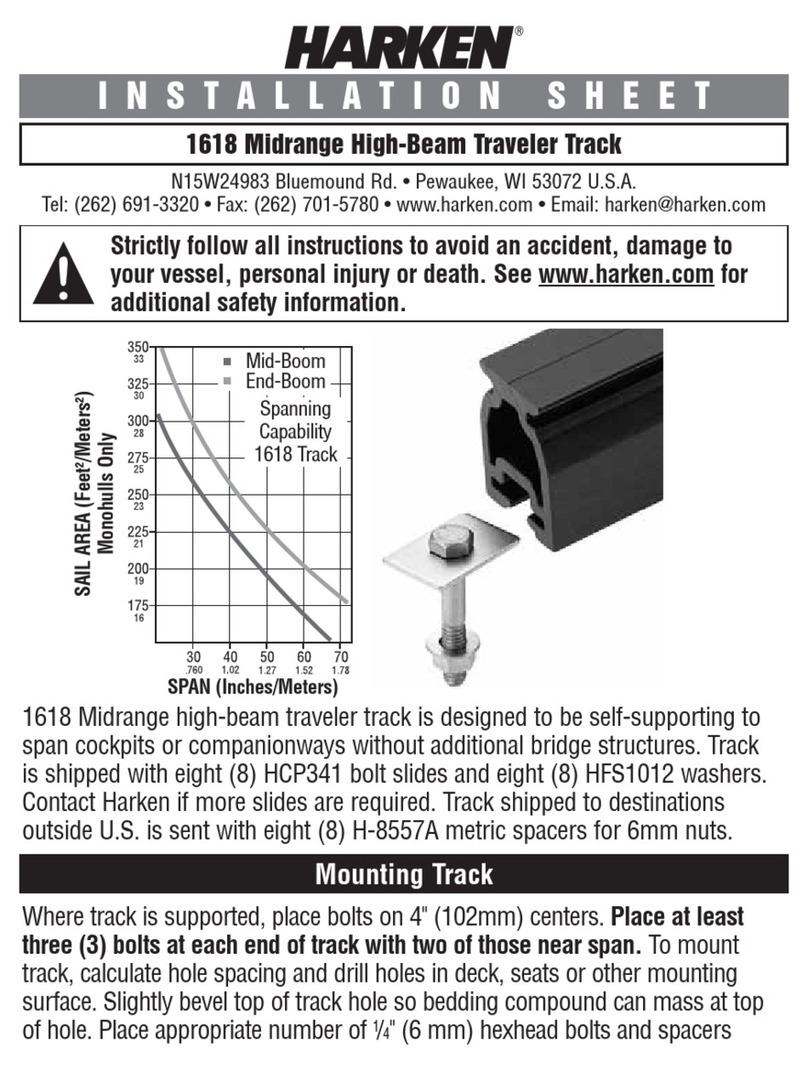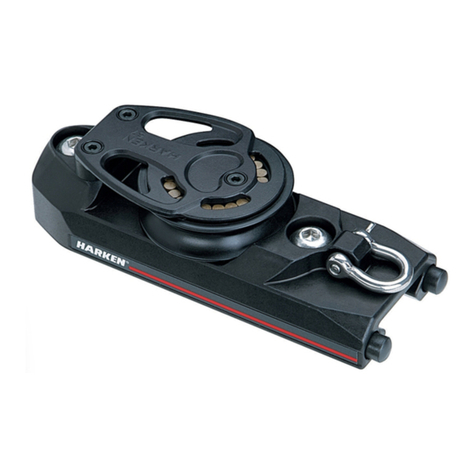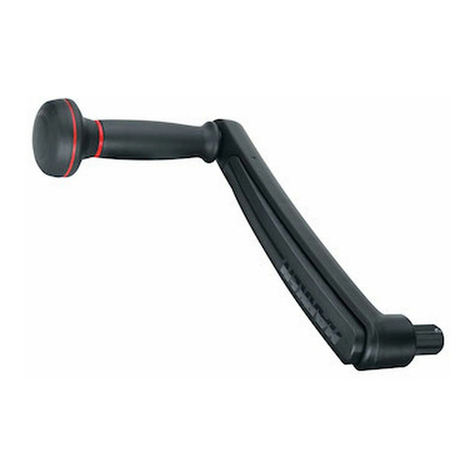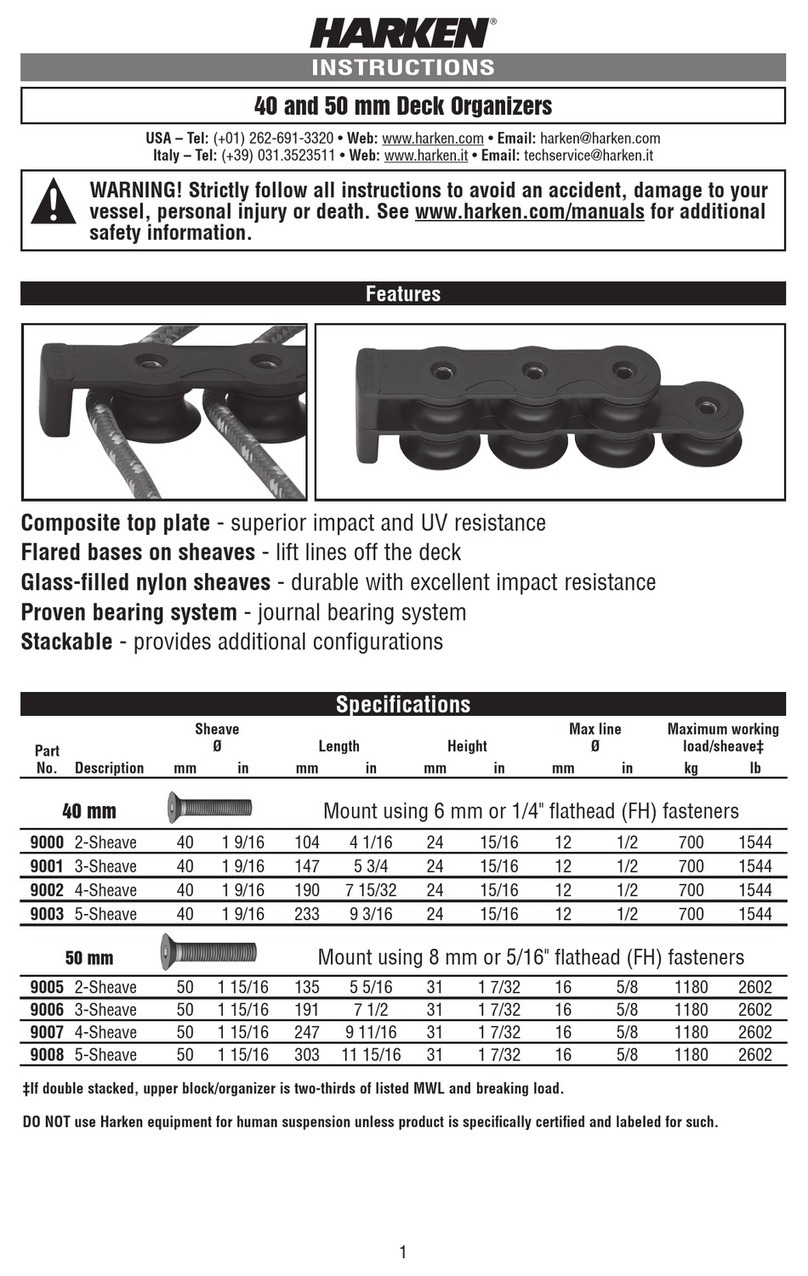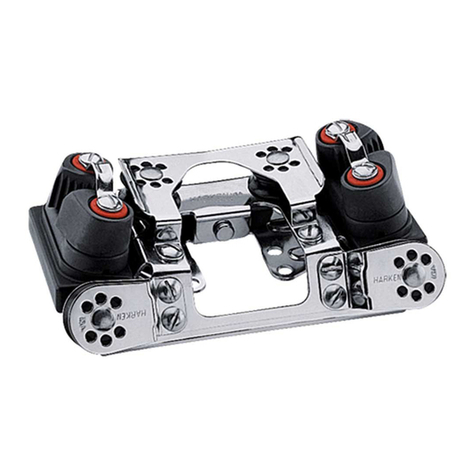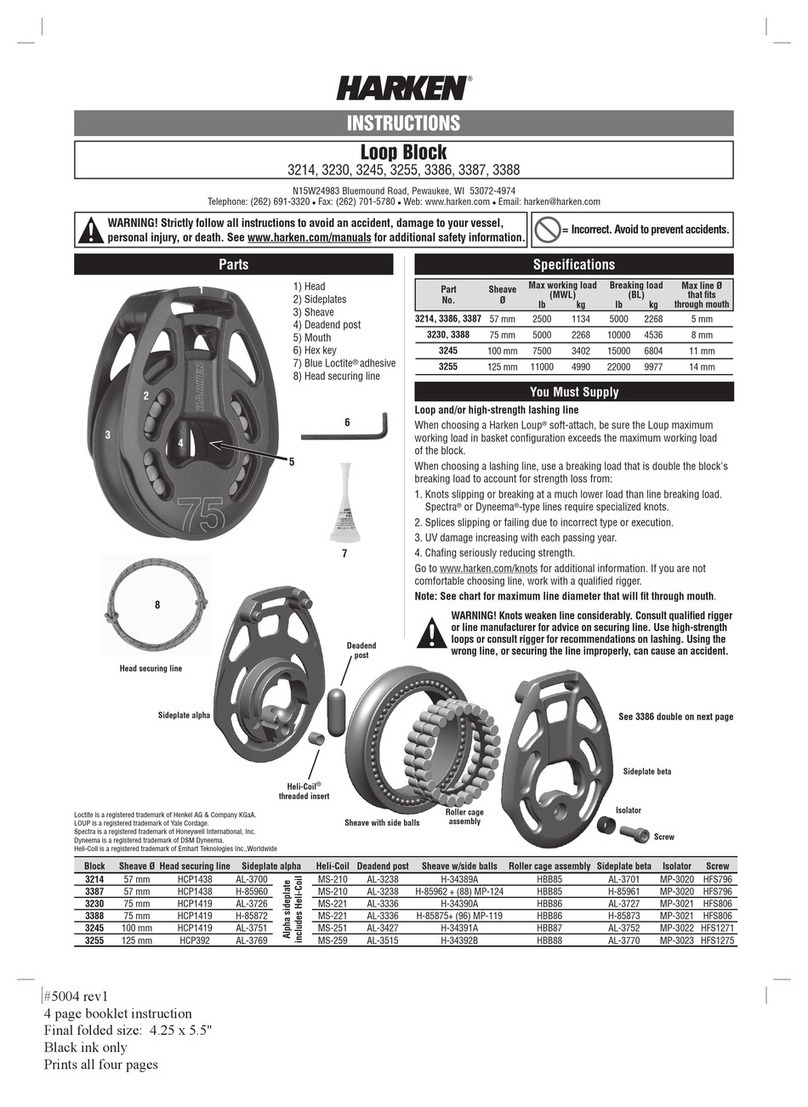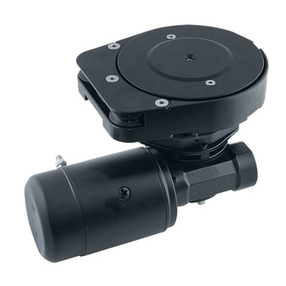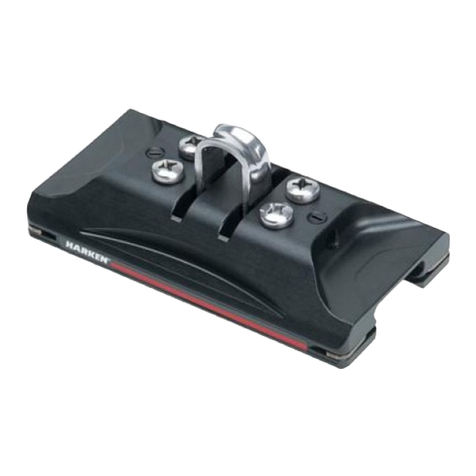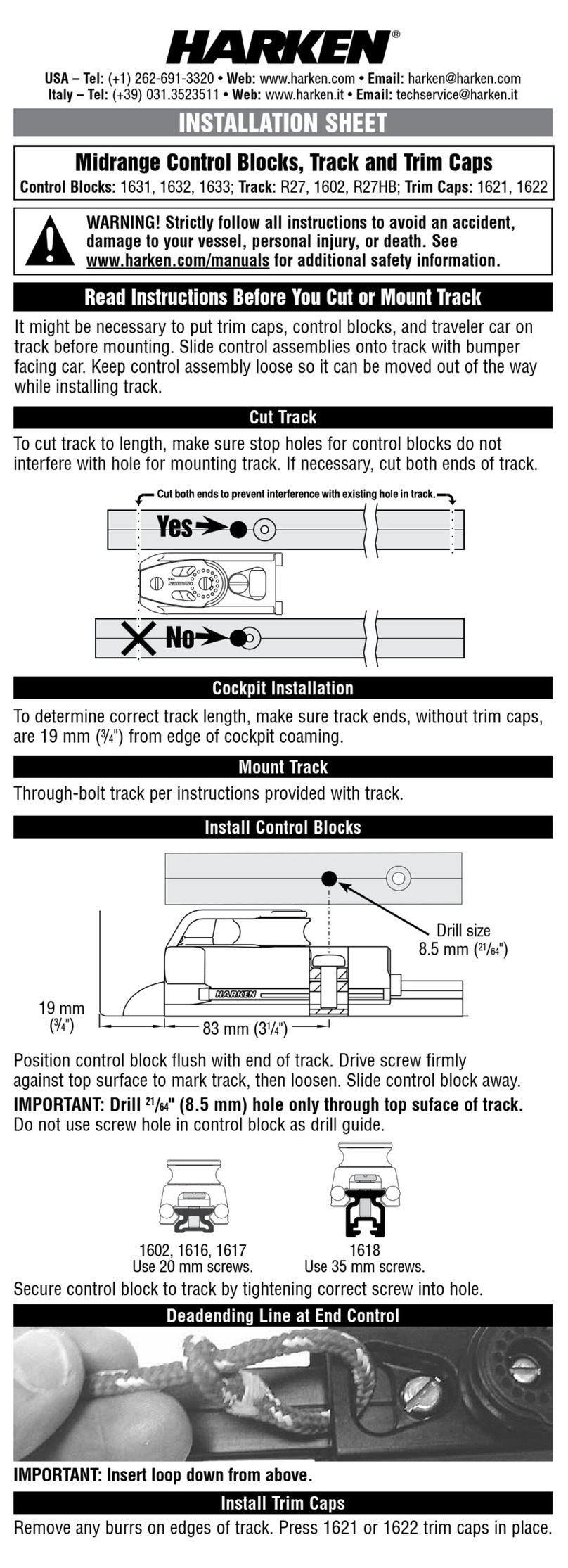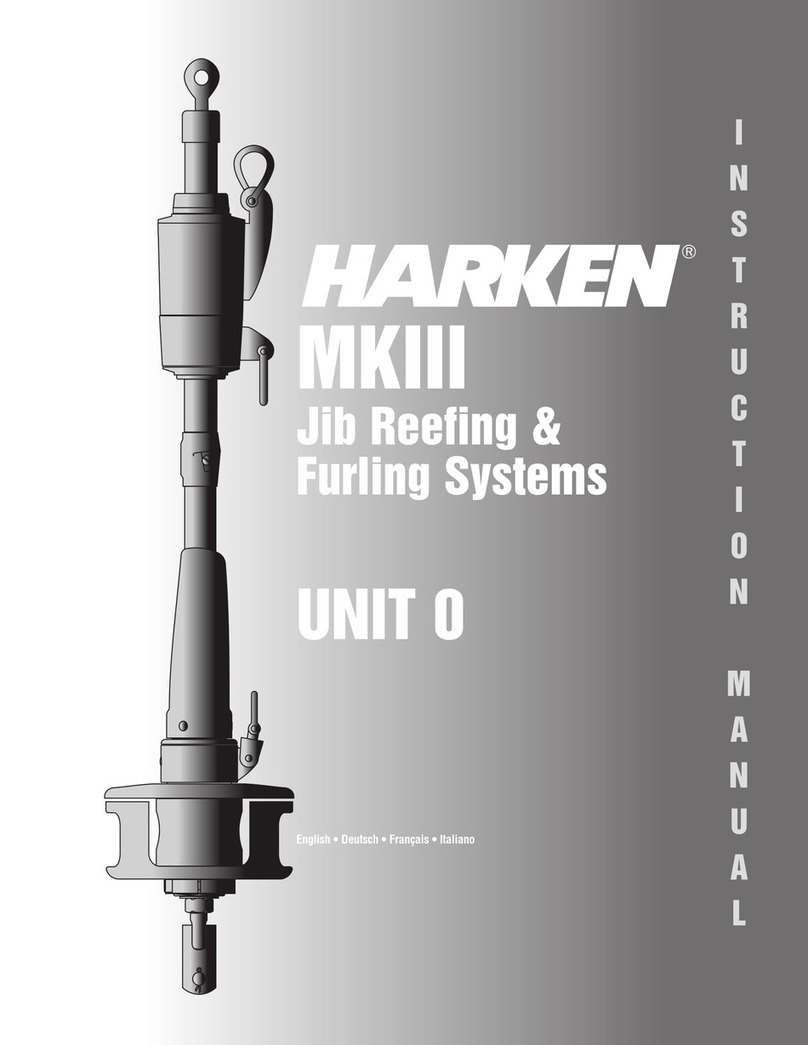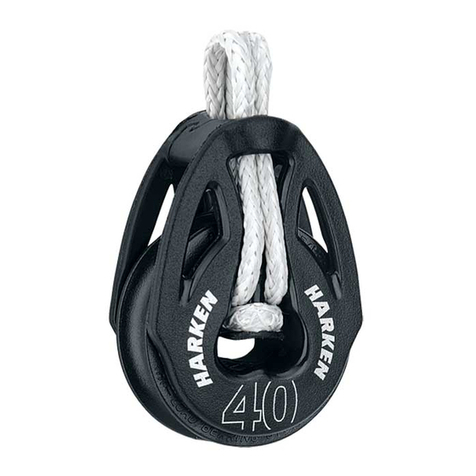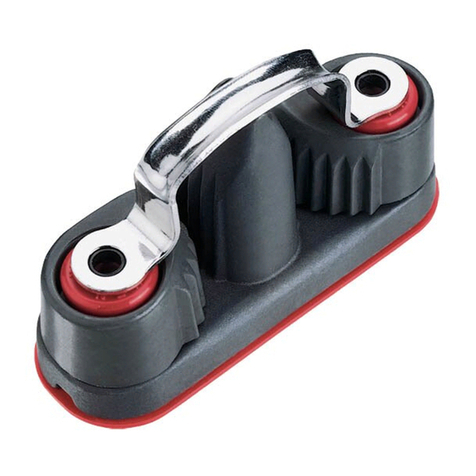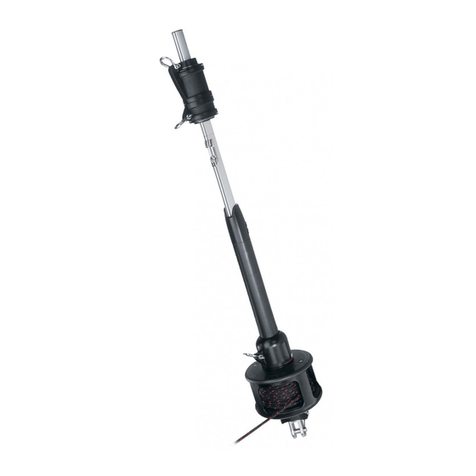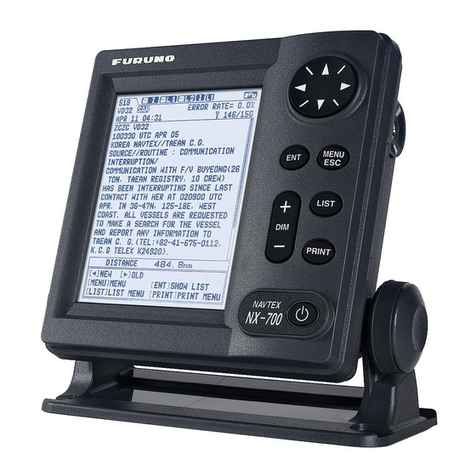
8 Hydro 1
Installation
Mount Electronic Control Box
Choose a suitable location for the electronic control box (ECB) as described in the planning section.
The ECB is (L) 11.02" (280 mm) x (W) 7.0" (180 mm) x (H) 5.2" (132 mm) and is externally mounted using four (4) M6 (¼") fasteners.
The ECB is water resistant to IP67; however, its location should be dry and within a 5 m wire run to the HPU. Power supply cables and
deck switches connect to ECB. (See Electrical Installation, pg. 14)
A mounting pad with tie downs will be required for securing the HPU to
the boat. Every installation is unique. Considerations for the mounting
pad and tie downs follow:
• Themountingpad(notsupplied)maybeatray,platform
or bridge that securely attaches to the boat and supports
the HPU. Consider total weight and overall dimensions.
(See Technical Data, pg. 20)
• TheHPUisfastenedusingfour(4)M10–1.5x15mmbolts
which thread into the underside of the HPU tank. Underside
access must be available for fastening.
• Additionaltiedownsupports(notsupplied)arerequired.
These may be similar to battery box tie downs and fabricated
from nylon or polyester webbing. Tie downs should attach
to the mounting pad and be lashed over the HPU tank as
illustrated.
Measure Hose Run
Measure hydraulic hose runs after the HPU has been mounted.
Remember these important points when measuring runs:
• ShortstraightrunsbetweenHPUandfunctionarebest.
• Avoidsharpedgeswhichmaychafethehose.
• Minimizettings/connectionsthroughouttheruntoavoid
possible leak points.
• Minimize90°bends,whichincreasesystemlossesand
decrease performance. If unavoidable use a 90° swept fitting,
do not use a 90° elbow fitting.
CAUTION! The HPU was shipped cleaned and tested. Harken strongly recommends against disassembly or removal
of the tank lid or the HPU components. Introduction of contaminants can cause operational problems and possibly
void warranty.
CAUTION! Do not exceed the manufacturer specified minimum bend radius.
Securing Hydraulic Power Unit
CAUTION! Cleanliness is crucial for any hydraulic system. Contamination is the primary cause of seal failure. Most
hydraulic hoses contain manufacturing debris when purchased. Attaching a dirty hose will contaminate the system.
Always flush hoses thoroughly before use. Failure to do so may void warranty.
Approximate clearance
required for installation
2"
(50 mm)
8"
(200 mm)
4"
(100 mm)
4"
(100 mm)
Avoid using an elbow
Use a swept hose fitting for a 90° bend
